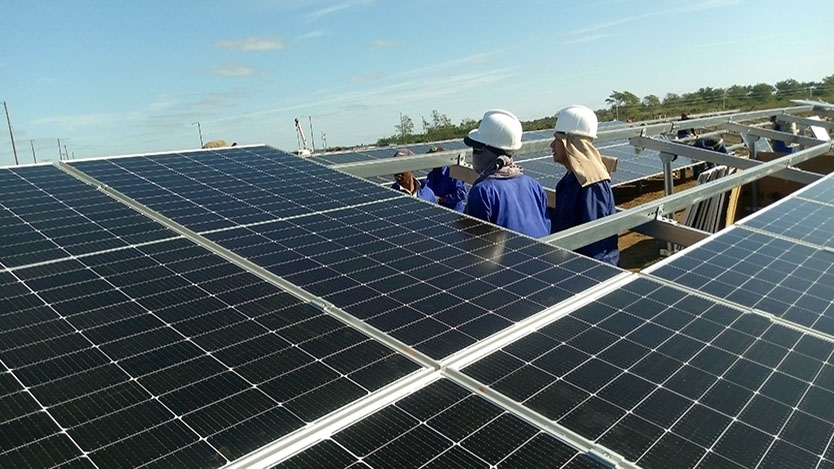Just as the authorities promised, daytime electricity cuts have decreased notably in this province over the last two months, a tangible relief for the population due to the commissioning and full operation of the first seven solar photovoltaic parks (Psfv).
The stable injection of clean energy into the National Electroenergy System (Sen) during the hours of maximum solar radiation makes the difference in the stability of the service, especially in the period between 10:00 in the morning and 3:00 in the afternoon.
Currently operating in the territory are the installations of Ceballos, with a maximum capacity to generate 4.4 Megawatts, Chambas (3.3 MW), Venezuela (2.2), Morón (4.4) and Cruce de la Torcha, Carolina and La Cuba, the last three with the greatest contribution (21.87 MW each), sufficient to cover demand in the aforementioned time period, if one considers the maximum capacity of said parks.
Lexter Arencibia Bacallao, director of the Provincial Load Dispatch Office of Ciego de Ávila, explained to Invasor that in the months of July and so far in August, the Psfv delivered more than 16,500 MW/hour, a figure greatly superior to the same period the previous year.
The energy contributed by these installations meant not consuming 4,290 tonnes of fuel and not emitting some 140,000 tonnes of Carbon Dioxide into the atmosphere.
The specialist said that at this moment a park in Morón and another in Majagua are under construction, which should enter into operation before the year ends, with a combined contribution of 26.87 MW.
In the country, the installation of 92 Psfv with a total of 2,012 MW is planned, of which more than 1,000 MW will be installed this year with the assembly of more than 50.
It will also have 4 sites with energy storage of 50 MW power each, for a total of 200 MW, which will allow compensating for the variability caused by photovoltaic generation as it becomes integrated into the system, said Osvel Concepción Díaz, director of generation with renewable energy sources, on last March’s Round Table.
As requirements, the parks have to be separated by eight kilometres from one another and at a distance of no more than 10 kilometres from the electrical substation, as a way to gain in efficiency and stability.




